PSRD drive to headline agenda for coming months
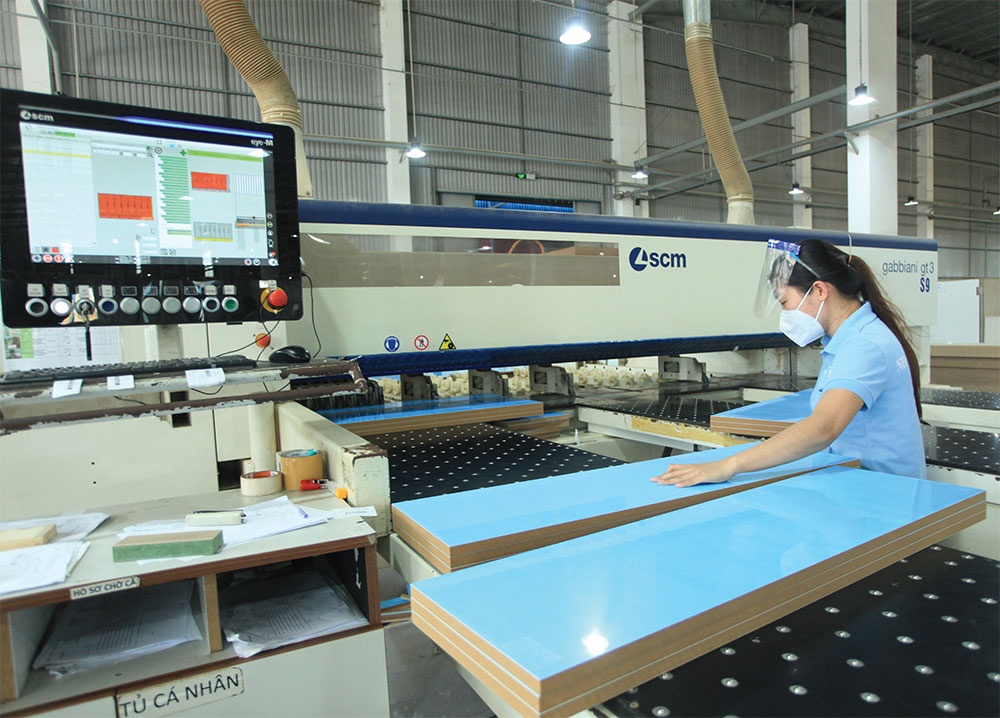 |
| The disbursement of billions of dollars is targeted to help companies with taxes, rents, and more, photo Le Toan |
Implementation and review of the country’s 2022-2023 Programme on Socioeconomic Recovery and Development (PSRD), valued at $15 billion, will be among the biggest issues to be discussed at the fifth session of the 15th National Assembly, which will open on May 22 and close on June 20.
The government has reported to the National Assembly Standing Committee (NASC) that from now until the year’s end, one of its most important tasks is to boost deployment of the PSRD, which remains slow due to a raft of obstructions.
The economy grew 3.32 per cent on-year in Q1, only slightly higher than the 3.21 per cent rise of Q1 of 2020, and such low growth is threatening the implementation of other goals for economic performance.
It is calculated that for the economy to hit its targeted 6.5 per cent this year, it must grow 6.7 in Q2, 7.5 per cent in Q3, and 7.9 per cent in Q4. The growth rates for the remaining two quarters must be 1 and 0.8 percentage higher than the Q3 and Q4 growth scenario of set early this year (6.5 and 7.1 per cent, respectively).
This would also mean the growth speed for Q3 and Q4 must be 2.26 and 2.38 times higher than the 3.32 per cent growth rate in Q1. It is being called a very challenging scenario in the context that key impetuses for growth are weakening.
“In the coming months, the government will continue implementing an effective fiscal policy, with a focus laid on supporting enterprises and people so that they can save their input costs and boost business and production activities,” said Minister of Planning and Investment Nguyen Chi Dung at a NASC meeting over a week ago. “We will also boost public investment disbursement, the PSRD, and three other national target programmes. This will create bigger momentum for economic growth.”
Desired outcomes
The PSRD was adopted by the National Assembly early last year amid businesses and individuals suffering from massive woes caused by the pandemic. On a macro-view, it is expected to enable the economy to achieve a higher level of growth, at 6.5-7 per cent annually over the 2021-2025 period.
The PSRD embraces five key components: re-opening the economy pertaining to enhancing medical capacity, and pandemic prevention and control; ensuring social welfare and employment; assisting enterprises’ recovery, cooperatives, and business households; developing infrastructure; and increasing institutional and administrative reform as well as improving the investment and business climate. Moreover, another $435 million will be mobilised from non-state budget financial funds.
“After more than one year of implementing the PSRD, the government and authorities at all levels have made great efforts to carry out assigned tasks. All 17 relevant documents have been enacted, and related policies have supported people and enterprises,” said a government report on the programme sent to the NASC.
By late April, around 29 per cent of the PSRD’s total value of $13.08 billion (excluding $2 billion for purchasing vaccines, medicines, and equipment) had been disbursed. However, as it stands, the PSRD will officially expire at the end of this year, the government reported.
Breaking down the disbursed sum for schemes on providing preferential loans via the Vietnam Bank for Social Policies (VBSP), accumulatively as of April 26, this bank disbursed types of loans valued at $737.26 million for about 332,000 customers. This included over $36 million for purchasing more than 86,000 computers and equipment for online study; $207.9 million as loans for buying social homes; $434.8 million as loans for employment assistance; $8.04 million as loans for 2,600 non-state nurseries and primary schools; and $50.56 million as loans for more than 23,700 customers in ethnic minorities and based in mountainous areas.
By late March, VBSP had disbursed loans with preferential lending rates of 6 per cent a year worth $58.56 million for poor people.
When it comes to the policy on providing housing rental for factory workers, localities disbursed $163.37 million, or 57.2 per cent of this policy’s value. About 5.3 million workers have been assisted.
For the policy of offering a 2 per cent lending rate from the state budget for enterprises, cooperatives, and household businesses via commercial banks, the government reported that accumulatively as of late March, the total provided reached only $14.2 million, tantamount to merely 0.82 per cent of the policy’s value of nearly $1.74 billion.
Accumulatively by late March, about $2.48 billion was disbursed for exempting and decreasing land taxes; and payment of land taxes and land rental worth $4.81 billion was extended. What is more, the opportunity cost for assistance via policies on extending land taxes and land rental reached $321.74 million. At present, all of these types of policies have been terminated.
“The implementation of the PSRD has closely followed the directions and policies of the Party and resolutions of the NA, contributing to the macroeconomic stability and assisting the economy to recover and develop,” the government reported to the NASC.
Heavy obstructions
Minister Dung acknowledged the slew of impediments to the implementation of the PSRD. For example, the NA in early 2022 decided on a plan to use $1.74 billion from the state budget as a 2 per cent lending rate incentive for enterprises, cooperatives, and household businesses via commercial banks.
“However, the deployment of this policy has been very slow. It is expected that by late this year, the disbursed sum may reach only $111.74 million, and the remaining $1.62 billion may not be disbursed,” Minister Dung said.
According to the Ministry of Planning and Investment, the main reasons behind such a low disbursement is that three-quarters of customers in the sectors eligible for assistance and have sufficient conditions to obtain loans have no demand for them. In addition, about 87 per cent of customers in sectors that are eligible for assistance failed to meet the conditions in order to obtain loans.
Specifically, one of the key conditions to get a 2 per cent lending rate incentive is that borrowers must demonstrate their “recovery ability” if they want to benefit.
“Having ‘a recovery ability’ is a very difficult condition to prove for those wishing to benefit from the incentive. Both commercial banks and enterprises said that it would be hard to specify what the recovery ability is. This condition is a tough nut to crack,” said Deputy Governor of the State Bank of Vietnam, Dao Minh Tu.
In another case, the NA last year decided on a plan to earmark $287 million from an increase in state budget revenue and a reduction of the state budget expenditures in 2021 for supporting factory workers in housing rental. However, the actual disbursement rate reached only 57.2 per cent.
“The design of this plan for supporting workers failed to meet reality. The implementation, including the submission and appraisal of dossiers and then disbursement of money for beneficiaries, were all slow,” said the government’s report. “Personnel who received and appraised the dossiers are in small number and have no expertise, with low responsibility in performance.”
Also under the PSRD, VAT for applicable goods and services was reduced to 8 per cent within 2022, excluding that for goods and services in telecommunications, IT, finance and banking, insurance, stock, real estate business, metal production and mining (except coal), coke production, petroleum, chemicals, and commodities and services that are subject to special consumption tax. However, in January 2023, the VAT rate returned to a normally fixed rate of 10 per cent.
Last week, the government agreed on a similar 8 per cent VAT reduction scheme, which will be submitted to the NA for discussion and adoption.
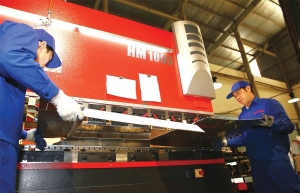 | Business rejuvenation still dependent on PSRD thrust As part of Vietnam’s colossal efforts to drive the economy forward, the implementation of the country’s largest-ever monetary and fiscal initiative is moving at a slow pace, meaning an impediment for businesses to quicken their recovery and for the economy to achieve desired growth. |
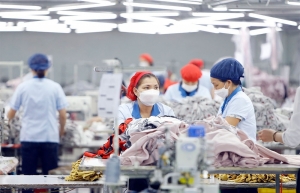 | Government strives to extend fiscal policy outlined by PSRD Amid difficulties forecast to continue undermining the business community, a fiscal policy under Vietnam’s hallmark socioeconomic recovery initiative is expected to be lengthened next year in a bid to fuel enterprises’ performance and achieve desired economic growth. |
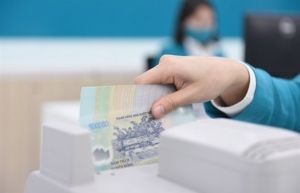 | Leaders declare intention to up PSRD deployment Amid difficulties continuing to undermine the business community, the government is hurrying the deployment of the national hallmark socioeconomic recovery and development initiative in a bid to fuel enterprises’ performance and achieve desired economic growth. |
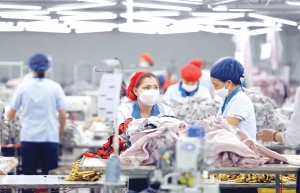 | Systemic weaknesses holding back impact of PSRD The slow-paced implementation of a monetary policy is making it hard for the government to provide assistance for enterprises, cooperatives, and household businesses. |
What the stars mean:
★ Poor ★ ★ Promising ★★★ Good ★★★★ Very good ★★★★★ Exceptional
Related Contents
Latest News
More News
- Ho Chi Minh City backs $2 billion AI data centre with dedicated task force (January 06, 2026 | 08:43)
- PM sets January deadline for high-speed rail consultant (January 06, 2026 | 08:40)
- New decree spurs on PPP implementation (December 31, 2025 | 19:01)
- Global alliance develops $1 billion AI data centre network in Vietnam (December 30, 2025 | 10:08)
- Standing out in the Chinese outbound investment wave (December 29, 2025 | 10:29)
- Bright spots obvious in foreign investment mission (December 29, 2025 | 09:00)
- Ho Chi Minh City hits $8.37 billion in FDI (December 29, 2025 | 08:28)
- Vietnam and UK cooperation backs finance talent for IFCs (December 27, 2025 | 16:31)
- Global partnerships key to Vietnam’s IFC development (December 26, 2025 | 16:18)
- Vingroup pulls out of bid to invest in North-South high-speed railway (December 26, 2025 | 11:42)

 Tag:
Tag:





















 Mobile Version
Mobile Version